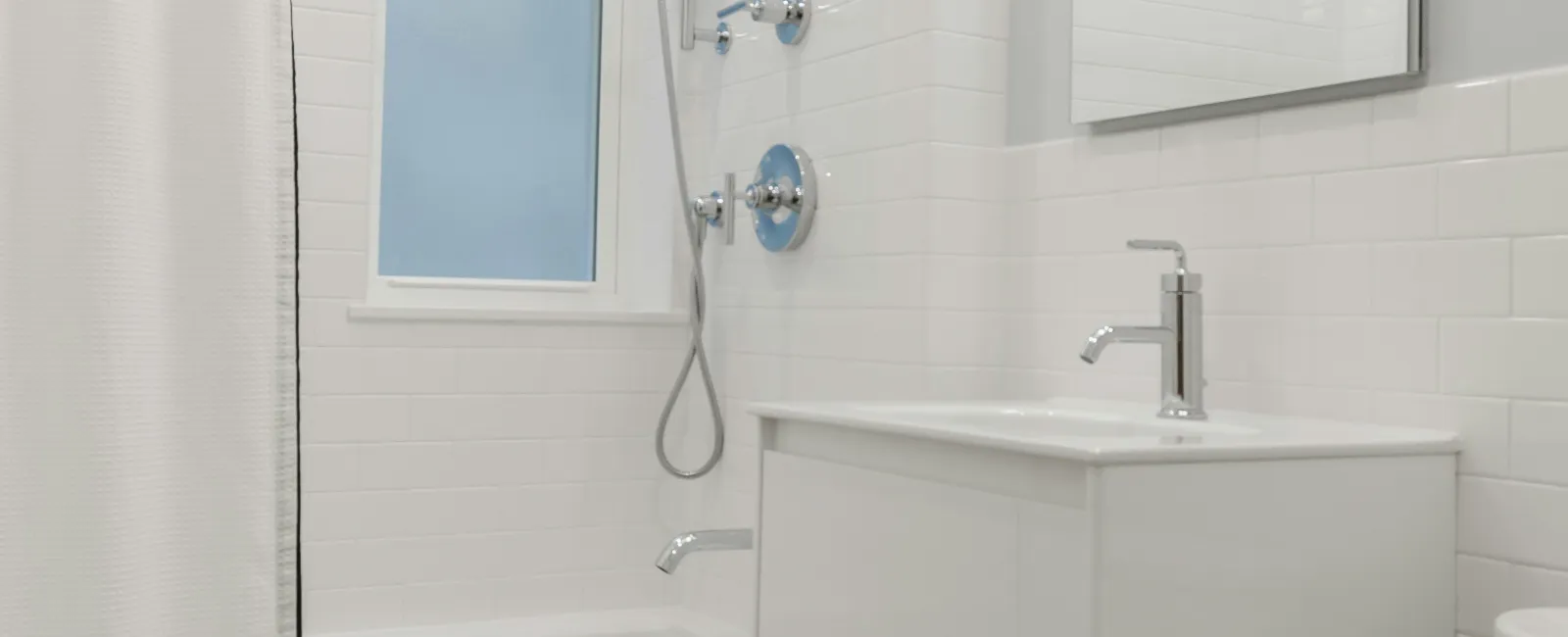Dealing with mold in the bathroom and shower is a common issue that can be both unsightly and unhealthy. Whether black mold in the shower or mildew creeping along the grout lines, mold thrives in moist environments, making your bathroom the perfect breeding ground. Learning to effectively remove mold from the shower and bathroom areas is crucial for maintaining a clean, healthy home.
Mold in the bathroom looks bad and can cause respiratory issues and allergies, especially when dealing with toxic black mold in the shower. In this article, we'll explore practical methods for shower mold removal, how to prevent mold from returning, and the best cleaning products to use. If you've found yourself asking, "How do I get rid of mold in the bathroom?" or "Can I leave vinegar on mold overnight?" we've got the answers to help you tackle the issue.
Why Does Mold Grow in the Shower?
Bathrooms are the perfect environment for mold growth—high humidity, moisture, and often limited ventilation all contribute to the problem. When water sits on surfaces like tiles, grout, or caulking, it creates the damp conditions mold needs to grow. Combine that with warm temperatures from hot showers; you have the ideal breeding ground for mold in the shower.
The problem isn't limited to visible areas. Mold can grow in hidden spots, like underneath caulking, behind walls, or around the edges of bathtubs. Regular bathroom mold removal is essential for a healthy living space.
How to Get Rid of Black Mold in the Shower
Black mold in the shower is not just an aesthetic issue—it can pose health risks if left untreated. Mold spores can trigger allergies, asthma, and other respiratproblemssues, particularly in individuals with pre-existing conditions. So, how do you clean black mold in the shower effectively?
The best way to clean mold in the shower depends on the severity of the problem and the type of surface affected. Here are some of the most effective methods for shower mold removal:
1. Vinegar and Baking Soda
Vinegar is one of the most popular natural solutions for cleaning mold in the shower. Vinegar is acidic and can kill about 80% of mold species. You can combine vinegar with baking soda for extra cleaning power for tougher stains or black mold in the shower.
First, spray undiluted vinegar directly on the moldy area and let it sit for at least an hour. If you're wondering, "Can I leave vinegar on mold overnight?" the answer is yes, especially for more stubborn spots.
Next, scrub the surface with a brush dipped in water and baking soda.
Rinse thoroughly with warm water and repeat if necessary.
Vinegar is particularly effective because it's natural and doesn't emit harsh chemicals, making it safer for homes with children or pets.
2. Hydrogen Peroxide
Hydrogen peroxide is another excellent solution for removing mold from the shower. It works similarly to vinegar but is often more influential on tough-to-clean areas like grout and caulking.
Apply 3% hydrogen peroxide directly to the affected area.
Let it sit for 10-15 minutes, then scrub with a brush.
Rinse with water and ensure the area is arid.
3. Commercial Mold Cleaners
If the mold in your bathroom is widespread or stubborn, you may need commercial mold cleaners. These products are formulated specifically for bathroom mold removal and often contain vital chemicals like bleach or ammonia. Be cautious when using these cleaners—ensure proper ventilation, wear gloves, and avoid mixing them with other cleaning products, as this can create toxic fumes.
How to Prevent Mold in the Shower
Once you've removed the mold, the next step is preventing it from returning. Regular maintenance and cleaning are vital to keeping mold or mildew in the shower at bay. Here are some tips to help prevent mold growth in your bathroom:
1. Improve Ventilation
Poor ventilation is one of the most significant contributors to bathroom mold growth. If your bathroom has an exhaust fan, use it every time you shower to reduce humidity. Opening a window after showering can also help dry the air more quickly.
2. Dry Surfaces After Use
Mold thrives on damp surfaces, so wipe down shower walls, floors, and fixtures after every use. Using a squeegee to remove excess water from tiles can drastically reduce the chances of mildew in the shower.
3. Regular Cleaning
Cleaning your bathroom regularly with mold-killing solutions like vinegar or hydrogen peroxide can prevent mold from taking hold. Pay particular attention to grout lines, caulking, and around the bathtub's base, as these areas are most prone to moisture buildup.
How to Get Rid of Mold in the Bathroom
Dealing with mold in the bathroom doesn't stop at the shower. Other areas, such as the walls, ceiling, and even your bathtub, can be affected. Bathroom mold remediation involves identifying the mold, cleaning it effectively, and taking steps to prevent it from returning.
1. Removing Mold from Grout
Grout lines are a favorite hiding spot for mold. The porous nature of grout makes it easy for mold to take hold and difficult to clean. Use a stiff brush with vinegar and water to scrub the grout lines thoroughly. For extra stubborn mold, apply a paste made from baking soda and water befwashingbing.
2. Cleaning the Bathtub
Mold in the bathtub often appears along the seams or corners where moisture accumulates. A vinegar or hydrogen peroxide spray and regular scrubbing can keep mold from growing in these areas.
3. Removing Mold from Walls
If you notice mold or mildew on your bathroom walls, addressing it quickly before it spreads is crucial. Use a commercial mold cleaner or a vinegar solution to wipe down the affected area. Be sure to dry the wall thoroughly to prevent mold from coming back.
What Kills Black Mold in the Shower?
Many homeowners ask, "What kills black mold in the shower?" While natural solutions like vinegar, hydrogen peroxide, and baking soda are effective, they may not always be enough for more severe infestations.
In cases where mold has penetrated deep into grout or caulking, you may need to replace these materials to eliminate the mold. Mold-resistant grout or caulk can be a good investment to prevent future growth.
The Best Way to Clean Mold in the Shower
Ultimately, the best way to clean mold in the shower depends on the severity of the mold and the materials affected. Natural cleaners like vinegar and baking soda can be highly effective for small mold patches in the shower. However, if you're dealing with larger or more stubborn areas of black mold, you may need to use stronger commercial cleaners or consult a professional.
Summary: Keep Your Bathroom Mold-Free
No one wants to deal with mold in the bathroom or shower, but with the proper cleaning techniques, you can remove it and keep your bathroom fresh. Whether using natural methods like vinegar or commercial mold cleaners, regular cleaning and preventative steps are crucial to keeping mold at bay.
For more significant or persistent mold problems, don't hesitate to consult a professional for bathroom mold remediation. A mold-free bathroom isn't just about aesthetics—it's crucial for the health and safety of everyone in your home.
Get Professional Help with Mold Removal
If your mold problem is too severe for DIY methods or you're dealing with a recurring mold issue, professional help may be the best solution. Rely on Dalmatian Plumbing for all your mold remediation needs, and don't let black mold in your shower or your bathroom compromise your health. Contact a professional at Dalmation Plumbing for your mold remediation service. We will assess the situation and ensure your bathroom stays clean and mold-free for good.


